Viaggio in Sicilia / 9: 22 giugno – sabato
A big day on this trip: morning at the parco archeologico, then on to the archeological museum; afternoon, puppet show; evening, Euripides’s Ippolito portatore di corona (Fedra) at the Teatro Greco, after the the puppet theater complements of the Museo dei pupi, in Ortigia.
Our morning experience at the archeological park was serene and sublime! We set out early to beat the crowds and heat and took full advantage: the fresh morning air, the light and crisp color of the stone against the blue sky, the deep green and brilliant pink-white-red of the oleanders, the splendor of the temples, theaters, ancient quarries where poor defenseless Athenians suffered untold horrors slaving for their Syracusan captors. But the series of sculptures by the Polish Igor Mitoraj placed so meaningfully throughout the park along with the moving and elegantly scripted textual commentaries that accompanied each piece: this transformed our walk through this the most brilliantly layered, multifaceted journey through time and ideas. Apart from its many other meanings, the Mitoraj collection placed throughout pays homage to the dovetailing of memory and time, art and location. We had a sneak preview to all this the evening before, when we were as awed as surprised by a tall bronze figure looming commandingly over the entrance to Siracusa’s harbor near the Miniace fortress. The impenetrable gaze, the contained power of a forceful physique, the large eyes gazing out across the horizons –across the seas of time– Mitoraj’s figures speak forcefully in their massive silence to modern-day pilgrims who deign stop, look, listen and think… no, who deign feel the strength of thought that there is in art so strategically situated, in the confluence of art and place when the place itself is so laden with symbolism. I should conclude these improvised reflections on Mitoraj in Siracusa (later we would see his imprint on Pompeii) by emphasizing, again, what I take to be the artist’s intentions: a site-specific reflection on such topics as freedom, dignity, and justice, aspiration and tragedy, time and memory and art’s role in linking these themes… niente di meno.
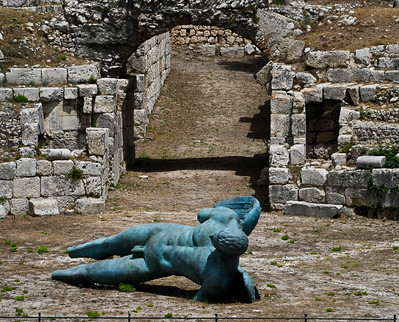
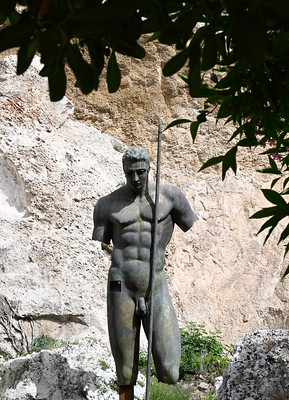
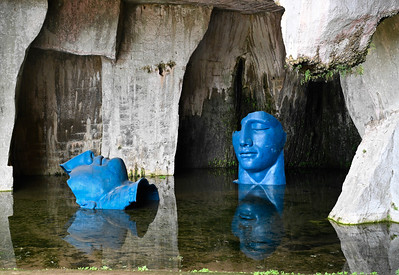
After feasting our eyes and minds on the quarries, the temples, the theater, the statues and the amphitheater, we walked down to Siracusa’s archeology museum. The building is indeed weird –Rick Steves has it right!– but the collection is truly first rate! My oh my oh my, one museum after another in Sicily with more and more handsomely illustrated kraters, finely crafted marble or clay figures of elegantly adorned Persephones or imposingly poised Hermes, a plethora of art and artifacts that render the splendor and magnitude of Magna Grecia –not to mention Phoenician (Carthaginian) Sicily– in all of its materiality. And just when you think that the collection will release you from the bondage of wonder and curiosity, allowing you to rest your eyes and brain and escape back into your today with with a cold beer or glass Grillo, to ponder everyday now as it unfolds in some outdoor cafe, no! You turn the corner and there awaits and entices yet another room, another marble masterpiece of some Grecian master, another Siren that calling out to the modern-day adventurer: “not just yet, not so fast…”
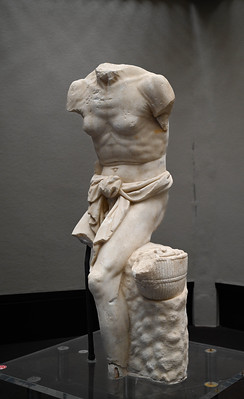
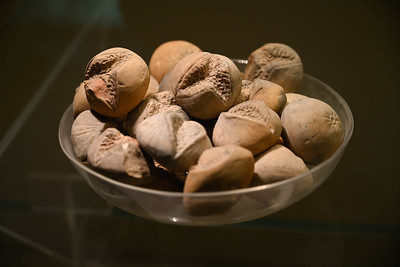
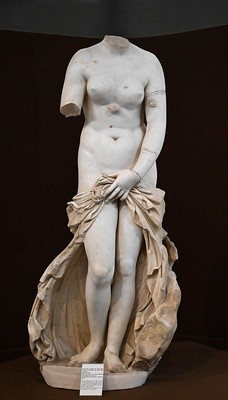
We did finally reach the end, maybe a self-imposed “end” (basta!), since one is never sure that some unmissable marvel isn’t being left behind, then headed back to Ortigia, bought the fixings for a hotel-room picnic, and rested our bones and brains. At 4:30 were back at the Museo dei pupi and, after a delightfully spirited performance of L’inganno di Angelica –that early modern femme fatale, bane of early-modern chivalric pride!– we headed off to see Ippolito portatore di corona (Fedra) at the Teatro greco. The spectacle captured everything that theater should be and do. First-rate acting, gorgeous costumes, superb set design and choreography, and, of course, the story! The performance of Euripides’ masterpiece brought the tragedy to life for us in ways that few if any performances of Greek tragedy have done in the past. We returned to our hotel thoroughly enchanted, slept well, headed out the next morning to Cefalù via Catania but continued to discuss Ippolito’s fate, his father’s ill judgement and Fedra’s dilemma –along with the role of the wet-nurse and chorus– for some time.
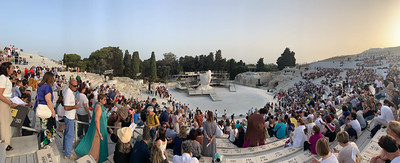
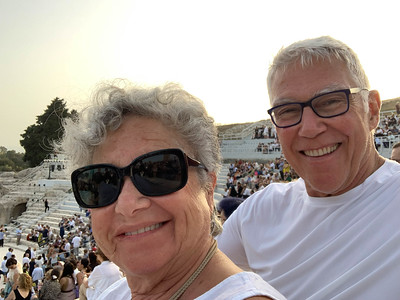
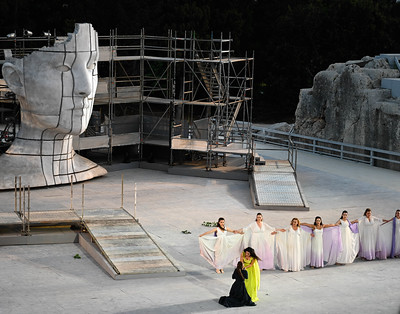
In the end, a day that was bookmarked by classic myths about overdetermined women, in comic and tragic mode.
Photo album available on Flickr at: https://flic.kr/s/aHBqjChynS
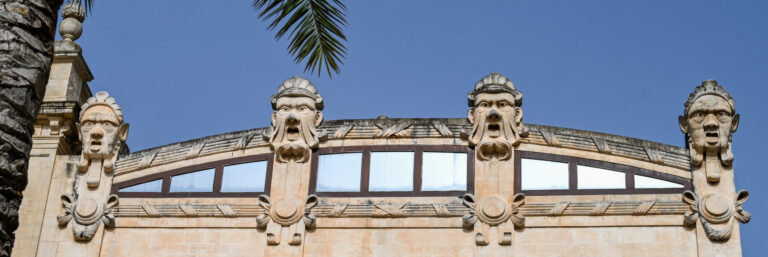
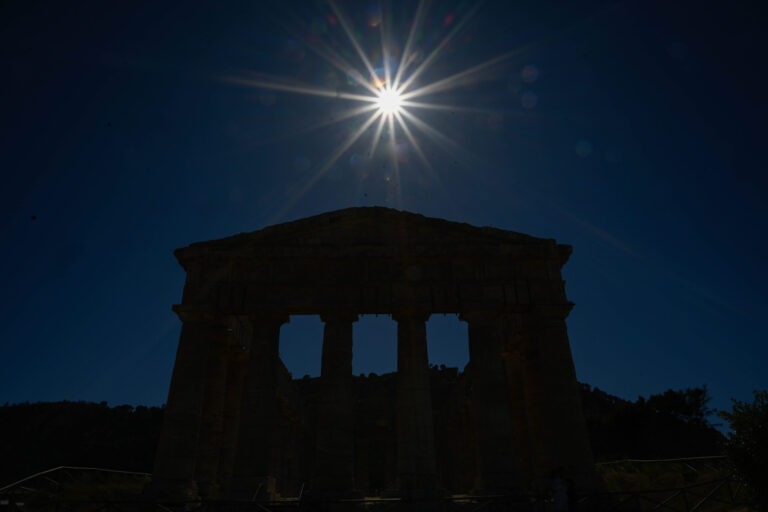
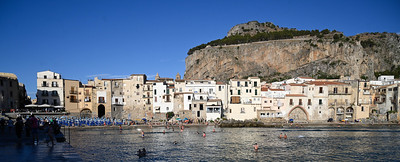
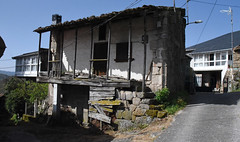


Such beautiful memories!